Disclosure: We may earn commissions if you purchase products after clicking on a link from our site.
Spot and stalk hunting for deer is one of the tried-and-true hunting methods used by hunters. Hunters move quietly and blend with the surroundings to conceal themselves. Spot and stalk hunting for deer has proven to be very effective.
Additionally, it requires a degree of physical fitness as you will move across rough and rugged terrain and stalk a mature buck. In this article, we discuss spot and stalk hunting for deer by sharing information to help you be more successful with this hunting method.
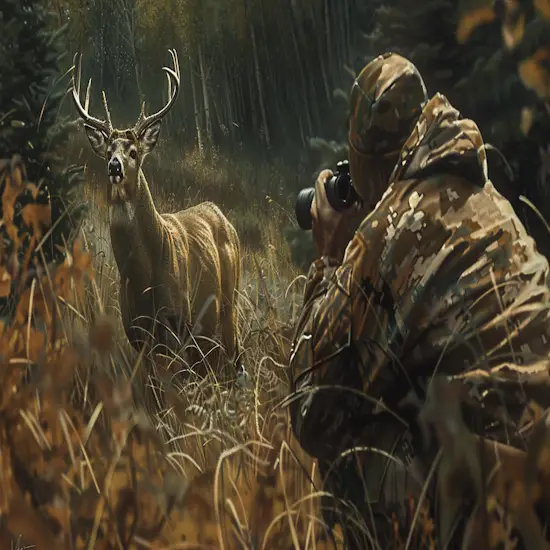
Table of Contents
- 1 Key Takeaways
- 2 Terrain Selection and Understanding Buck Behavior
- 3 Wind Management
- 4 Stalking Techniques
- 5 Glassing Strategies
- 6 Patience and Persistence
- 7 Decoys and Calls Usage
- 8 Scent Control
- 9 Learning and Adaptation
- 10 Bow Mounted Decoy and Calling Techniques
- 11 Camouflaging and Team Tactics
- 12 The Bottom Line
Key Takeaways
- Use terrain elevation for spotting deer from long distance.
- Identify buck bedding areas in secluded spots.
- Consider water sources for deer movement.
- Manage wind direction for stealthy approaches.
- Utilize camouflage and stalking techniques for success.

Terrain Selection and Understanding Buck Behavior
When spot and stalk hunting for deer, it is essential to select terrain with elevation changes for prime long-range glassing. Understanding mature buck behavior involves pinpointing their bedding areas and considering water access for a stealthy approach. Morning hunts can yield productivity due to mature buck movement patterns during that time.
Terrain Elevation Importance
Understanding the significance of terrain elevation is crucial for successful spot-and-stalk deer hunting, as it plays a substantial role in your ability to spot and approach a big buck effectively. When selecting terrain for your hunt, consider the benefits that varying terrain elevations can offer. Here is a table highlighting the importance of terrain elevation:
| Terrain Elevation Significance | Benefits |
|---|---|
| Higher Elevations | Better vantage points for glassing deer from afar |
| Sloping Terrain | Allows for stealthy approaches and potential cover |
| Valleys and Ravines | Provides natural funnels for deer movement |
Buck Bedding Areas
To improve your success in spot-and-stalk deer hunting, focus on identifying prime buck bedding areas within the terrain you choose for your hunt.
- Understand Buck Behavior:
- Bucks prefer bedding in secluded areas for safety.
- Look for thick cover or vegetation for bedding spots.
- Study mature buck movements during different times of the day.
A mature buck often chooses bedding spots based on safety and proximity to resources. By recognizing these key areas, you can increase your chances of locating and stalking them successfully. Remember, patience and observation are essential when targeting buck bedding locations.
Water Access Consideration
Consider water access as an important factor when selecting terrain and understanding buck behavior for successful spot-and-stalk deer hunting. Deer, like all living creatures, need water to survive, making water sources vital for hunting success.
When planning your spot-and-stalk strategy, take into account the proximity of water sources to areas where deer are likely to be. By positioning yourself strategically near water access points, you increase your chances of encountering deer during their routine visits for hydration. Below is a table illustrating the significance of water access in deer behavior:
| Deer Behavior | Water Access Importance |
|---|---|
| Hydration and Survival | Essential for deer survival and daily activities |
| Movement Patterns | Influences deer movement and potential sighting locations |
| Bedding Areas | Often located near water sources for easy access |
Morning Hunt Productivity
When planning your morning hunt for a mature buck, focus on selecting terrain with elevation changes and understanding a mature buck’s behavior to increase your chances of success. Choose suitable terrain with elevation changes for long-range glassing. Also, know the area bucks frequent for successful spot and stalk hunts. Understand buck bedding areas and j-hook behavior.
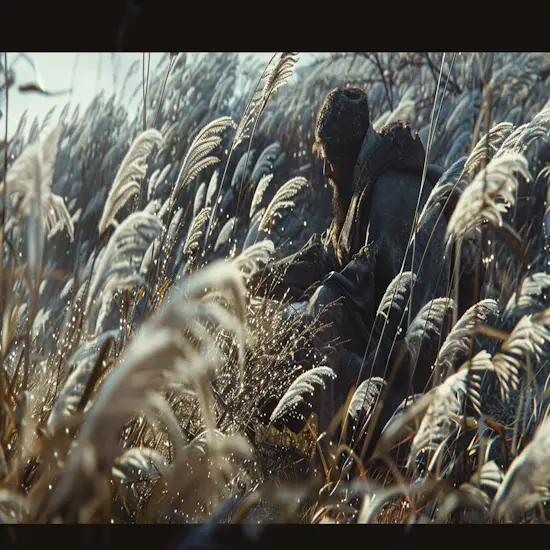
Wind Management
When it comes to managing the wind during your deer hunt, you should work to impact deer travel routes effectively. Use tools like a puff bottle or milkweed silk to check the wind direction before planning your routes. Always make sure to adapt to changing wind conditions for successful stalking.
Wind and Deer Routes
How can you effectively manage wind and deer routes for successful spot-and-stalk deer hunting?
- Understand Wind Impact:
- Work with the wind to influence deer travel paths.
- Plan your approach based on both wind direction and deer movement patterns.
- Be prepared to adjust your stalking route according to changing wind conditions.
2. Utilize Tools for Wind Assessment:
- Use tools like puff bottles or milkweed silk to determine wind direction.
- Incorporate wind-checking tools into your hunting routine.
- Enhance your stalking success by staying aware of wind nuances.
3. Adapt to Changing Wind:
- Stay flexible and adjust your strategy as wind conditions shift.
- Develop a keen sense of how wind impacts deer behavior.
- Master the art of adapting to varying wind patterns during your hunt.
Tools for Wind
To effectively manage wind conditions while spot-and-stalk deer hunting, utilize tools such as puff bottles or milkweed silk to determine wind direction accurately. These tools help you plan your routes based on wind and deer travel patterns.
By checking the wind constantly and adapting to changing conditions, you increase your chances of a successful stalk. Understanding the wind and its impact on deer behavior is essential for a fruitful hunt. Make sure to use these tools wisely and stay mindful of the wind throughout your hunting expedition.
With a keen awareness of wind direction, you can position yourself strategically and improve your overall hunting experience.
Adapting to Wind
Use tools like puff bottles or milkweed silk to accurately determine wind direction while adapting to changing conditions for a successful deer stalking experience.
- Always check the wind direction before making your move.
- Plan your stalking route based on the wind to remain undetected.
- Be ready to adjust your approach as wind conditions shift.
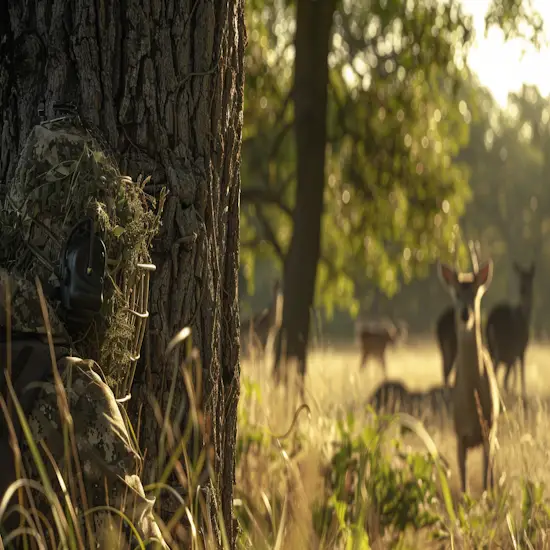
Stalking Techniques
When stalking deer, it’s important to focus on various aspects such as movement for stealth, effective camouflage techniques, monitoring the deer’s behavior, and utilizing a range finder for accurate shots.
Pay attention to staying hidden, moving slowly, and observing the deer closely to guarantee a successful stalk. Remember to adjust your pace, assess the terrain, and be prepared to halt and set up when necessary.
Movement for Stealth
For improved stealth during your deer stalking endeavors, remember to move slowly and cautiously, utilizing cover and terrain features to your advantage. Here are some key movement techniques to enhance your stalking abilities:
- Move silently: Take slow and deliberate steps to avoid alerting nearby deer.
- Use natural cover: Blend in with your surroundings to remain unseen by the deer.
- Stay low and hidden: Keep a low profile and use the terrain to stay out of sight.
Camouflage Effectiveness Tips
To enhance your stalking abilities during deer hunting, mastering camouflage effectiveness is key to remaining undetected by your target. Choose camouflage that matches the environment you’ll be hunting in, blending seamlessly with the surroundings.
Break up your outline by using natural elements like branches or foliage to disrupt your human shape. Stay low and move slowly, mimicking the natural movements of the forest. Avoid sudden movements that could catch the deer’s attention. Use shadows and terrain to your advantage, staying out of direct sight.
Monitoring Deer Behavior
Monitoring deer behavior during a stalk requires keen observation and understanding of their movements in the wild.
- Watch for subtle cues like ear flicks or tail movements that indicate alertness.
- Pay attention to the direction of their gaze and body posture to gauge their level of comfort.
- Take note of their feeding patterns and movements to anticipate their next steps.
Rangefinder Usage Techniques
Utilize your range finder strategically to confirm shot distances accurately during your deer stalking endeavors.
Before making your move, make sure you have a clear understanding of the distance to your target.
Once you spot a deer, use your range finder discreetly to determine the exact range. This information is essential for making a precise shot.
Remember to adjust your stalking approach based on the confirmed distance. By incorporating your range finder into your stalking techniques, you increase your chances of a successful hunt.
Stay focused, be patient, and use this tool effectively to enhance your spot and stalk hunting experience.

Glassing Strategies
To enhance your deer hunting success, make sure to utilize your binoculars effectively, keep moving while spotting, and prioritize early spotting.
By mastering these glassing strategies, you’ll increase your chances of locating deer and planning successful stalks.
Effective Binocular Use
For effective glassing strategies during spot-and-stalk deer hunting, regularly scan the surroundings from higher elevation using binoculars to enhance visibility and spot movement.
- Keep your binoculars handy for quick access.
- Scan slowly and methodically, covering the area in sections.
- Focus on areas with good visibility and potential deer activity.
Effective binocular use is essential in spotting deer from a distance. By utilizing your binoculars properly, you increase your chances of identifying deer movement and planning your approach strategically. Remember to scan carefully, focus on high-activity areas, and be prepared to react swiftly to any signs of deer presence.
Movement Spotting Techniques
Regularly scanning the surroundings from a good vantage point using binoculars enhances visibility and aids in spotting movement during spot-and-stalk deer hunting. Utilize binoculars for effective spotting, focusing on areas where deer are likely to move.
Scan the surroundings methodically, paying attention to any flicker of movement. Essential spotting is vital for identifying deer before they detect you. Look for subtle shifts in the landscape, such as twitching ears or a flick of a tail, indicating deer presence.
Train your eyes to distinguish between natural movements and potential deer activity. By staying vigilant and actively scanning the area, you increase your chances of spotting deer during your hunting expedition.
Importance of Early Spotting
Begin your deer hunting expedition by actively scanning the open areas for any signs of movement using effective glassing strategies.
- Regularly glass from high elevations for better visibility
- Utilize binoculars for effective spotting
- Early spotting increases success rates
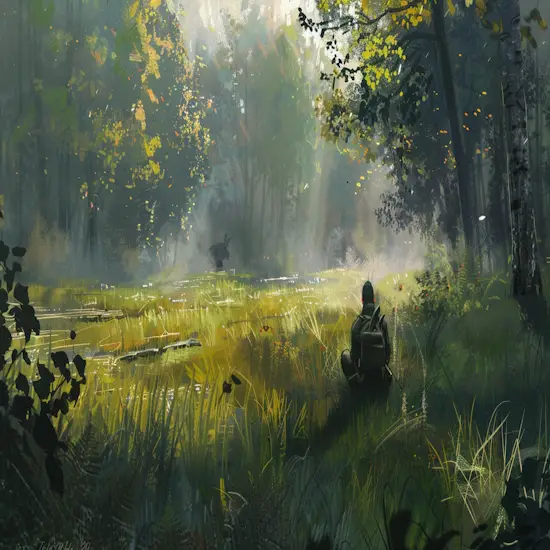
Patience and Persistence
You need to understand that successful spot and stalk hunting demands patience and persistence. Don’t rush into the stalk; take your time and stay focused during those long waiting periods.
Waiting Game Strategy
For a successful spot-and-stalk deer hunting experience, patience and persistence are key elements to master. Resist the urge to rush – waiting is part of the game. Stay focused during long periods of stillness, keeping your senses sharp.
Perseverance in Stillness
To excel in spot-and-stalk deer hunting, mastering the art of patience and persistence is essential. When hunting, remember that success may not come quickly. It’s important to avoid rushing into a stalk and stay focused during long waits. Here is a simple yet effective visual representation to emphasize the importance of patience and persistence in hunting:
| Patience | Persistence |
|---|---|
| Wait for the right moment | Keep trying even if unsuccessful |
| Stay still for long periods | Continue scouting and tracking |
| Maintain focus on the target | Never give up on the hunt |
Endurance for Success
Enduring through challenges in hunting requires a steadfast commitment to patience and persistence in your approach.
- Don’t rush into a stalk.
- Stay focused during long waits.
- Be persistent in your efforts.
Patience is key as success may not come quickly, and staying alert during those extended periods of waiting can make all the difference. Avoid the temptation to hurry your movements; a successful hunt often demands long hours of stillness.
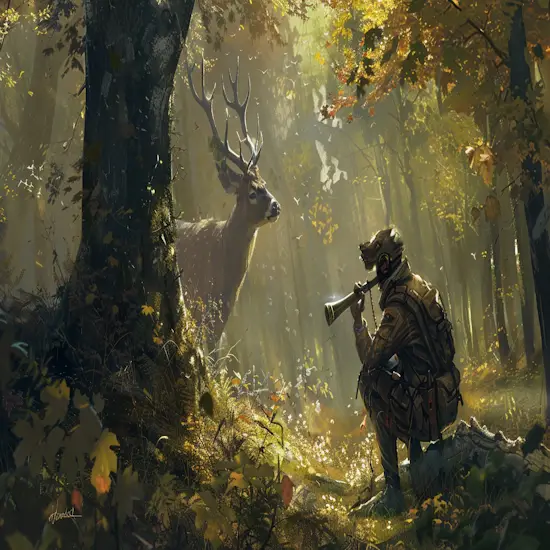
Decoys and Calls Usage
When hunting deer, using decoys strategically can improve your chances of a successful shot. Consider the placement of decoys to attract bucks within range and time your calls effectively.
Decoy Placement Strategies
Consider strategically placing decoys to enhance your hunting experience and increase shot opportunities.
- Choose Natural Looking Decoys:
- Opt for decoys that mimic the natural appearance of deer in your hunting area.
2. Position Decoys Downwind:
- Place decoys downwind from your location to lure deer closer without raising suspicion.
3. Decoy Movement:
- Create subtle movements in your decoys to simulate a live deer and attract attention.
Strategic decoy placement can draw deer into your shooting range, increasing your chances of a successful hunt. Remember to use decoys sparingly to avoid alarming the deer and practice setting them up effectively to maximize their effectiveness.
Call Timing Tips
For effective use of decoys and calls in deer hunting, timing plays an essential role in attracting and engaging your target. When using calls, it’s vital to mimic the sounds of deer at the right moment. Start with soft calls to pique curiosity, then escalate to more aggressive calls to provoke a response. Timing your calls in coordination with the deer’s behavior can increase your chances of a successful hunt.
Avoid overcalling, as this can alert deer to your presence. Remember, patience is key when using calls – wait for the right moment to make your move. By mastering the timing of your calls, you can enhance your hunting experience and increase your chances of a successful shot.
Effective Decoy Types
To enhance your hunting experience and increase your chances of success, understanding the different effective decoy types can be a game-changer in your decoys and call usage strategy.
- Full-Body Decoys: Realistic decoys that can attract bucks within bow range for better shot opportunities.
- Motion Decoys: Decoys with movement to simulate live deer behavior and pique curiosity.
- Rutting Buck Decoys: Mimic dominant bucks during the rut to draw in territorial bucks for potential shot opportunities.
Using these decoy types strategically, along with calls, can significantly improve your hunting success. Practice deploying decoys effectively and learn how bucks respond to different calls to maximize your chances of a successful hunt.
Minimal Call Usage
Use decoys and calls sparingly during your hunting excursions to avoid spooking deer and maintain stealth. Overusing calls can alert deer to your presence, causing them to flee. Instead, focus on strategic placement of decoys to attract bucks within bow range.
Understand how bucks respond to calls and decoys, practicing to use them effectively. Remember, less is more when it comes to decoys and calls. By using them strategically and sparingly, you increase your chances of a successful shot opportunity without scaring off your target.
Be mindful of the deer’s behavior and responses, adjusting your decoy and call usage accordingly to enhance your hunting experience.
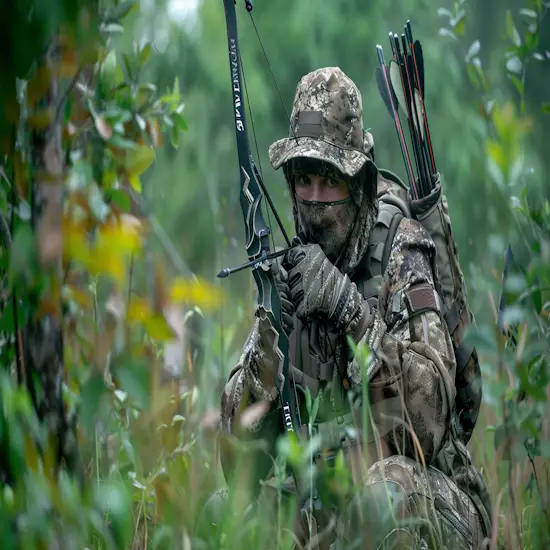
Scent Control
To maintain stealth during your deer hunt, ensuring your gear and clothing are scent-free is essential. Before heading out, shower with scent-free soap and store your equipment in scent-proof containers. Always pay attention to the wind direction to prevent deer from detecting your presence.
Scent-Free Gear Importance
Minimize your detection risk by prioritizing scent-free gear and practicing effective scent control techniques.
- Invest in Scent-Free Clothing:
- Choose clothing specifically designed to minimize human odor.
- Look for materials that wick away moisture to reduce scent.
2. Use Scent-Free Detergents and Sprays:
- Wash your hunting clothes with scent-free detergents.
- Spray your gear with scent eliminators before heading out.
3. Store Gear Properly:
- Keep your hunting gear in scent-proof containers.
- Store items with natural scents separately to avoid contamination.
Shower With Scent-Free Soap
To improve your scent control while hunting, make sure you shower with scent-free soap before heading out into the field. Using essential products on your gear and clothing is vital for avoiding detection by deer. By showering with scent-free soap, you eliminate any human odors that could alert deer to your presence.
This simple step can greatly increase your chances of a successful hunt by minimizing the risk of spooking deer with your scent. Remember to pay attention to wind direction and store your gear in scent-proof containers to further reduce the possibility of detection.
Maintaining proper scent control is essential for staying undetected and increasing your chances of a successful spot and stalk hunting experience.
Store Gear Properly
Properly storing your hunting gear is essential for maintaining scent control while out in the field.
- Use scent-proof containers to store your gear.
- Keep your hunting clothes in a sealed plastic bag.
- Store your gear away from any strong odors in a cool, dry place.
Wind Direction Awareness
Maintain scent control in your hunting endeavors by being aware of wind direction. Scent-free products on your gear and clothing are essential. Shower with scent-free soap before heading out and store your gear in scent-proof containers.
Pay close attention to the wind direction to avoid detection by deer. Preventing them from picking up your human scent is key to a successful hunt. Adapt your movements based on changing wind conditions and deer travel patterns.
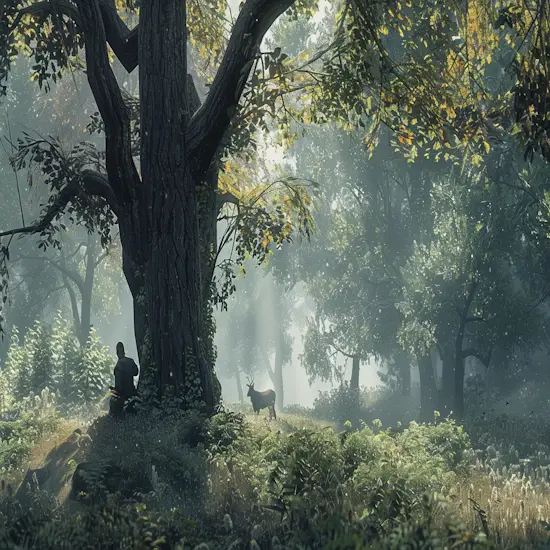
Learning and Adaptation
As you venture into the world of spot-and-stalk deer hunting, remember to reflect on past hunts to learn from mistakes, continuously improve your skills through practice, and be open to trying new techniques.
Your adaptability and willingness to learn will greatly enhance your hunting experience and increase your chances of success in the field.
Keep honing your skills and adjusting your strategies based on changing conditions for a more rewarding hunting journey.
Reflecting on Past Hunts
Reflect on your past hunts to glean valuable insights and enhance your hunting strategies for future success.
- Analyze Your Mistakes: Identify areas where past hunts went wrong. Did you spook deer due to noise or movement? Were you impatient and rushed into a stalk? Learn from these errors to avoid repeating them.
- Highlight Successful Tactics: Recall instances where your strategies worked well. Did you effectively use wind direction to approach deer unnoticed? Were you patient and persistent in your stalking efforts? Replicate these successful tactics in future hunts.
- Adapt Based on Experiences: Consider how environmental factors, deer behavior, and your performance influenced past hunts. Adjust your approaches accordingly to improve your chances of a successful spot and stalk.
Continuous Skill Improvement
When improving your hunting skills, focus on learning from past experiences and adapting your strategies for better success in the field. Reflect on your hunts to identify areas for improvement. Continuously refine your skills through practice and by incorporating lessons learned.
Stay open to trying new techniques and adjusting your tactics based on changing conditions. Remember that skill improvement is a journey, and each hunt offers an opportunity to enhance your abilities. By being receptive to learning and adapting, you can become a more effective spot-and-stalk hunter. Embrace the challenge of honing your skills, and you’ll increase your chances of a successful hunt.
Trying New Techniques
To enhance your spot-and-stalk hunting skills, consider experimenting with new techniques that can elevate your hunting experience and increase your success rate in the field.
- Try Different Stalking Approaches:
- Experiment with stalking into the wind or using crosswinds for stealth.
- Utilize available cover, shadows, and terrain features to remain undetected.
- Have a backup plan ready in case the initial approach fails.
2. Incorporate Decoys and Calls:
- Use decoys strategically to attract deer within range.
- Practice using grunt calls, doe bleats, and rattling horns effectively.
- Be cautious not to overuse decoys and calls to avoid alarming the deer.
3. Adapt Based on Experience:
- Reflect on past hunts to learn from successes and mistakes.
- Continuously improve your skills through regular practice and adaptation.
- Stay open to trying new techniques and adjusting your strategies based on changing conditions.

Bow Mounted Decoy and Calling Techniques
When using bow mounted decoys and calls, consider strategic placement and selection for best effectiveness in your hunting endeavors. Remember to move stealthily, setting up cover and shooting lanes for successful shots.
Utilize auditory cues and decoys to enhance your hunting experience while maintaining a strategic advantage.
Decoy Placement Strategies
For effective bow mounted decoy placement strategies and calling techniques, consider utilizing a combination of auditory elements with your decoy to increase hunting success.
- Establish Shooting Lanes: Guarantee clear paths for a clean shot when the deer approaches.
- Utilize Auditory Elements: Integrate grunt calls, doe bleats, and rattling horns strategically to attract the deer.
- Move Wisely: If you call and the deer responds, contemplate moving downwind to regain the advantage before taking your shot.
These techniques can help you lure deer within range for a successful hunt. Be cautious of your surroundings and adapt your strategies based on the deer’s reactions.
Effective Call Selection
When using bow mounted decoys and calling techniques for deer hunting, always consider selecting calls that mimic the natural sounds of deer to attract them effectively.
Bow mounted decoys offer extra draw time, and combining auditory elements with decoys can increase effectiveness.
After calling, moving downwind can help you regain the advantage. Set up shooting lanes and cover strategically for a successful hunt.
Grunt calls, doe bleats, and rattling horns should be used strategically. Remember to use decoys and calls sparingly to avoid spooking deer.
Practice using these tools effectively and understand how bucks respond to them. By utilizing bow mounted decoys and calling techniques wisely, you can enhance your chances of a successful hunt.
Stealthy Movement Tactics
To enhance your stealthy movement tactics when utilizing bow mounted decoys and calling techniques for deer hunting, it’s important to focus on maintaining a low profile and minimizing any unnecessary noise.
- Utilize Bow Mounted Decoys: Attach a decoy to your bow for extended draw time.
- Combine Auditory Elements: Pair decoys with calls strategically to enhance effectiveness.
- Move Downwind After Calling: Regain the advantage by shifting positions after calling the deer.
Cover and Shooting Lanes
Guarantee your positioning offers sufficient cover and unobstructed shooting lanes when employing bow mounted decoys and calling techniques for deer hunting. When setting up your hunting spot, make sure you have clear shooting lanes and strategic cover to remain hidden from the deer’s view.
Utilize grunt calls, doe bleats, and rattling horns strategically to attract deer within your shooting range. Remember to use decoys sparingly to avoid spooking the deer. By combining auditory elements with decoys, you increase your chances of a successful shot opportunity.
Stay patient and persistent, adapting your tactics based on the deer’s response. Here is a table to help you understand the key elements of effective bow mounted decoy and calling techniques:
| Key Elements | Description |
|---|---|
| Clear Shooting Lanes | Ensure unobstructed paths for your shot |
| Strategic Cover | Hide yourself effectively from the deer |
| Decoys and Calls Usage | Use them strategically for better opportunities |
Camouflaging and Team Tactics
To enhance your concealment while hunting, consider camouflaging your face with paint, masks, or head nets for better effectiveness. Implement team tactics with a hunting buddy to strategize and increase your chances of success. Experiment with different camo techniques and teamwork approaches to optimize your hunting experience.
Face Concealment Techniques
For better concealment during hunting, consider utilizing effective face concealment techniques in camouflaging and team tactics.
- Use face paint, masks, or head nets to cover the face.
- Position strategically with decoys for effective hunting.
- Implement team tactics with a hunting buddy.
These techniques not only help you blend into your surroundings but also enhance your overall hunting experience. By concealing your face effectively, you increase your chances of staying undetected by deer, allowing you to get closer for a successful shot. Working in tandem with your hunting partner and incorporating these camouflaging methods can notably improve your hunting outcomes.
Team Hunting Strategies
When hunting as a team, coordinating camouflaging techniques and strategic tactics can greatly enhance your chances of a successful hunt. By blending in with your surroundings and working together efficiently, you increase your stealth and overall effectiveness. Here’s a table summarizing key camouflaging and team tactics:
| Camouflaging Techniques | Team Tactics | Strategic Tips |
|---|---|---|
| Face paint or masks | Coordinate movements | Assign roles clearly |
| Ghillie suits | Use signals silently | Communicate non-verbally |
| Natural surroundings | Flank your target | Plan escape routes |
| Maintain stealth | Watch each other’s back | |
| Utilize distractions | Adapt to changing situations |
Working as a team with well-thought-out camouflaging and tactical strategies can significantly improve your hunting outcomes.
Camo for Better Concealment
Blend in seamlessly with your environment using effective camouflaging techniques for better concealment during team hunting operations.
- Camouflage the face for improved concealment.
- Use face paint, masks, or head nets to cover your face.
- Position strategically with decoys and coordinate with your hunting buddy for enhanced effectiveness.
The Bottom Line
Spot and stalk hunting for deer is a type of hunting method used by hunters. When spotting and stalking deer, hunters often look for whitetail deer from a glassing spot.
Additionally, you have to move slowly and blend with the area. Patience, skill, and adaptability are required to successfully spot and stalk deer.
In this article, we shared information about the spot and stalk hunting method to help be more successful in implementing this hunting method. If you want to learn more about still hunting for deer, then read this article. You can also read pre-season preparation for deer hunting to learn how to properly prepare for the hunting season.
